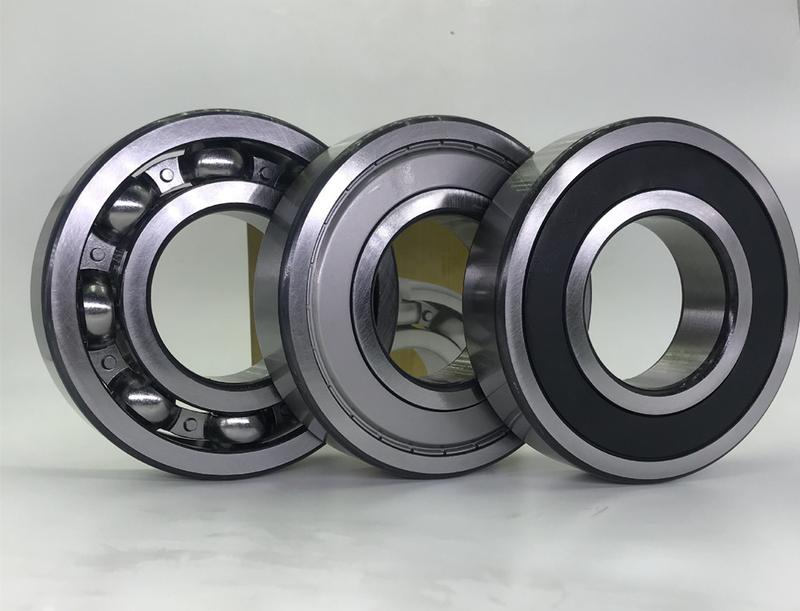Volution Bearing Things To Know Before You Get This
Table of ContentsThe Of Volution BearingGetting The Volution Bearing To WorkThe Single Strategy To Use For Volution BearingThe Best Guide To Volution Bearing
An axial (or drive) bearing lots is when force is parallel to the axis of the shaft. A radial bearing tons is when force is vertical to the shaft. A mix bearing load is when parallel and vertical pressures generate an angular force relative to the shaft. Round bearings are developed with spherical rounds and can disperse loads over a medium-sized surface area.Below is a fast referral for the sort of birthing lots and the finest sphere bearing for the task: Radial (perpendicular to the shaft) and light lots: Pick radial round bearings (likewise called deep groove sphere bearings). Radial bearings are several of the most typical types of bearings on the marketplace.
Roller bearings are developed with round rollers that can distribute loads over a larger surface location than round bearings. Below is a fast referral for the kind of birthing lots and the ideal roller bearing for the job: Radial (perpendicular to the shaft) loads: Choose standard cylindrical roller bearings Axial (thrust) (parallel to the shaft) loads: Select round thrust bearings Integrated, both radial and axial, lots: Select a taper roller bearing The rotational rate of your application is the following aspect to look at when choosing a bearing.
They do far better at higher rates and use a greater speed variety than roller bearings. One factor is that the contact between the rolling component and the raceways in a sphere bearing is a point as opposed to a line of call, like in roller bearings. Because rolling aspects press into the raceway as they surrender the surface area, there is much less surface contortion occurring in the point loads from sphere bearings.
Volution Bearing Fundamentals Explained

If this happens, a simple and usual service is to switch over the round bearing material from steel to ceramic. This keeps the bearing dimension the same however provides about a 25% higher speed ranking. Considering that ceramic material is lighter than steel, ceramic balls generate much less centrifugal pressure for any kind of provided speed.
One factor is that the balls are smaller and smaller balls consider much less and generate much less centrifugal pressure when revolving. Angular contact bearings additionally have a built-in preload on the bearings which functions with centrifugal pressures to properly roll the rounds in the bearing. If you are making a high-speed application, then you'll want a high-precision bearing, normally within the ABEC 7 precision course.
Some Known Questions About Volution Bearing.
When the bearing is being used at high speeds, the rounds swiftly roll over the bearing raceway with less integrity which can lead to a bearing failing. High precision bearings. manufacturing athens, ga are produced with stringent criteria and have really little inconsistency from the specs when generated. High precision bearings are reliable for applications that go quick because they ensure excellent sphere and raceway communication.
Some applications, manufacturing like cutting tool pins, will only enable a little inconsistency to take place on its revolving parts. If you are engineering an application like this, then select a high precision bearing since it will generate smaller system runouts because of the limited tolerances the bearing was made to. Birthing strength is the resistance to the pressure that creates the shaft to differ its axis and plays a vital duty in lessening shaft runout.

When the angular get in touch with bearings are installed, the balanced out is eliminated which causes the spheres to push right into the raceway without any kind of outside application pressure. This is called preloading and the process enhances bearing rigidity also before the bearing sees any kind of application forces. Recognizing your bearing lubrication demands is important for picking the appropriate bearings and needs to be thought about early in an application style.
A Biased View of Volution Bearing
Lubrication creates a movie of oil between the rolling element and the bearing raceway that aids prevent rubbing and overheating. The most typical kind of lubrication is grease, which includes an oil with a thickening agent. The thickening agent keeps the oil in position, so it won't leave the bearing.
After the rolling component passes by, the oil and thickening agent join back together. For high-speed applications, understanding the rate at which the oil and thickener can separate and rejoin is essential. This is called the application or bearing n * dm value. Prior to you choose a grease, you need to find your applications ndm worth.
Compare your ndm value to the grease's max speed value, located on the datasheet. If your n * dm worth is greater than the grease max speed value on the datasheet, after that the grease will not be able to provide adequate lubrication and early failure will certainly take place. An additional lubrication alternative for high-speed applications are oil haze systems which blend oil with compressed air and afterwards infuse it into the bearing raceway at metered intervals.